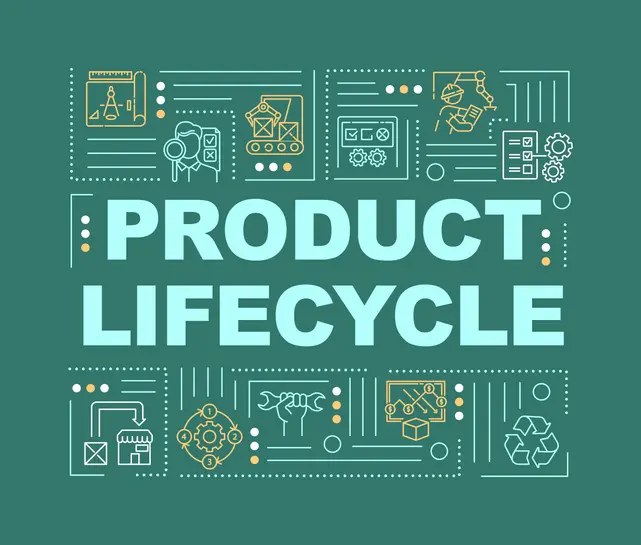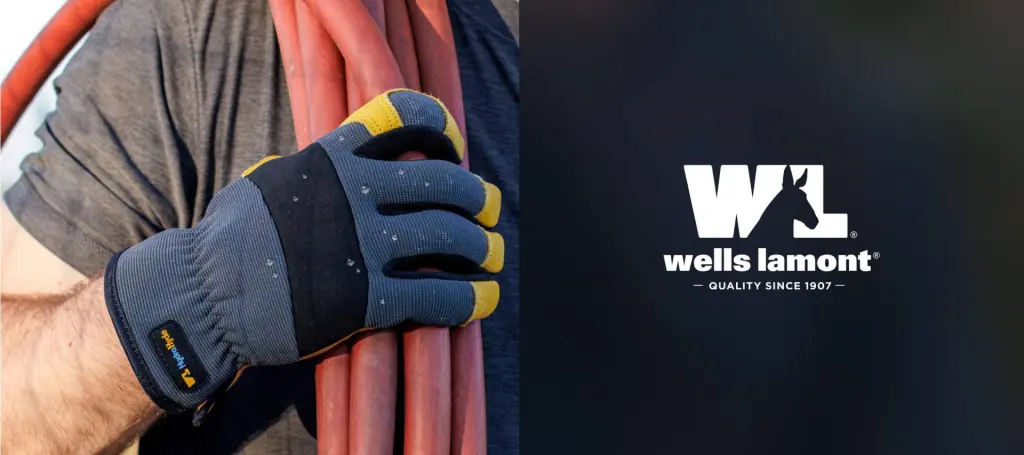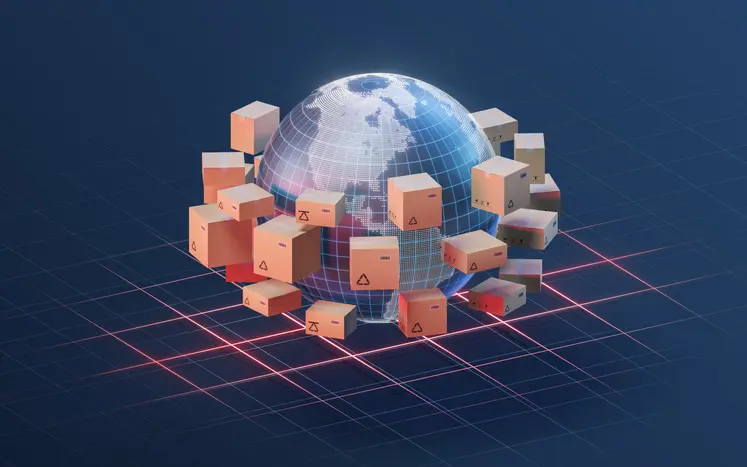The purchasing process is a vital aspect of any organisation’s operations, forming the backbone of supply chain management and significantly influencing business success. This comprehensive guide explores the various stages, key players, challenges, and best practices involved in the purchasing process. It covers everything from identifying needs to evaluating supplier performance, emphasising how each step contributes to a company’s efficiency and profitability. An optimised purchasing process can result in substantial cost savings, stronger supplier relationships, and improved operational efficiency. As businesses face an increasingly complex global marketplace, understanding and refining the purchasing process is more important than ever. This guide offers insights and strategies to help organisations streamline their purchasing operations and gain a competitive edge.
What is the Purchasing Process?
The purchasing process is a systematic series of actions and decisions involved in acquiring goods or services for an organisation. It constitutes everything from identifying a need to final payment and evaluation, ensuring that the right products or services are obtained at the right time, quantity, source, and price. While “purchasing” and “procurement” are often used interchangeably, purchasing is specifically the transactional aspect of procurement, which also includes strategic activities like sourcing and supplier management. Key stages in the purchasing process include need identification, supplier selection, negotiation, order placement, and payment, all of which require careful execution for efficiency and cost-effectiveness.
Importance of the Purchasing Process
An effective purchasing process is crucial in the competitive, contemporary business environment, significantly impacting an organisation’s bottom line and operational efficiency. A well-managed process can lead to substantial cost reductions and profit increases by optimising supplier selection, negotiating favourable terms, and managing order quantities. Moreover, it assumes a vital role in building strong supplier relationships, leading to better pricing, quality, and flexibility, especially during supply chain disruptions. The purchasing process ensures accurate record-keeping for financial reporting, audit compliance, and decision-making. Finally, it provides valuable data that can be analysed to improve spending patterns, supplier performance, and overall business efficiency, driving innovation and growth.
Steps in the Purchasing Process
The purchasing process is a structured approach to acquiring goods and services that encompasses several distinct steps. Each step assumes an indispensable role in ensuring that the organisation obtains the right products or services at the right time and price. Let’s explore these steps in detail:
Identifying and Assessing Needs
The first crucial step in the purchasing process is identifying and assessing the organisation’s needs. This involves understanding what is required for efficient operations and meeting business objectives, with needs arising from various departments like production, operations, marketing, or human resources. During this stage, it’s essential to define the exact quantity, quality, and specifications of the needed goods or services, considering delivery timelines, budget constraints, and regulatory requirements. Effective need identification often requires collaboration between departments, ensuring that all specifications are accurately determined before initiating a purchase.
Creating and Approving Purchase Requisition
After identifying and defining the organisation’s needs, the next step is to create a purchase requisition, an internal document that formally requests the procurement of goods or services. This document includes details like item description, quantity, estimated cost, delivery date, and the requesting department. The purchase requisition is often created using specialised software to ensure all necessary information is captured. It then undergoes an approval process, typically involving review by department heads or finance managers, to ensure alignment with the organisation’s budget and policies. Once approved, the requisition is converted into a purchase order, an official document sent to the supplier, serving as a legally binding contract that details the purchase terms.
Requesting Proposals and Selecting Suppliers
After obtaining an approved purchase requisition, the next step is to identify potential suppliers and request proposals through a Request for Proposal (RFP) or Request for Quotation (RFQ). This process involves reaching out to multiple suppliers to gather details about their offerings, prices, and terms. The RFP includes specifications for the required goods or services, delivery timelines, quality standards, and may request information on the supplier’s experience and references. Once proposals are received, they are evaluated based on factors like price, quality, delivery capabilities, and supplier reputation. The selection process is crucial and considers not just cost but also factors like reliability and long-term partnership potential to ensure the purchase meets the organisation’s needs effectively.
Negotiating and Approving Orders
The next crucial step is negotiating the terms of the purchase to ensure the organisation gets the best value. Negotiations typically involve discussing price, payment terms, delivery schedules, warranties, and after-sales support. Effective negotiation requires understanding the market, the supplier’s position, and the organisation’s leverage, with a focus on creating a mutually beneficial relationship. Once terms are agreed upon, the final order undergoes an approval process, often involving multiple levels of management, to ensure alignment with the organisation’s policies and budget constraints.
Order Fulfilment and Delivery
Thereafter, it is formally placed with the chosen supplier by sending the approved purchase order, which acts as an official commitment to buy the specified goods or services under the agreed terms. The supplier then fulfils the order according to the specifications and timeline. During this process, the purchasing team maintains communication with the supplier to monitor progress and address any issues. Upon delivery, the receiving team inspects the goods or services to ensure they match the purchase order in terms of quantity, quality, and specifications, documenting and resolving any discrepancies with the supplier.
Payment Processing and Updating Accounts
The following steps concern the processing of payment. This begins with the supplier’s invoice, which is matched against the purchase order and goods receipt note for accuracy. If everything aligns, the invoice is approved for payment according to the agreed terms, whether immediate or after a specified credit period. Once payment is processed, the organisation’s financial accounts are updated, recording the expense and, if applicable, updating inventory records.
Reviewing Supplier Performance
The final step in the purchasing process is reviewing and assessing the supplier’s performance, considering factors like quality, delivery timeliness, documentation accuracy, responsiveness, and overall value for money. This evaluation is crucial for continuous improvement, helping to identify top-performing suppliers and areas for improvement. Insights from these reviews inform future purchasing decisions, aid in negotiating better terms, and contribute to optimising the organisation’s supply chain.
Types of Purchasing Processes
Although the basic steps of the purchasing process are consistent, organisations may use different types of purchasing processes based on the nature of the goods or services, purchase frequency, and strategic importance. Understanding these variations helps organisations optimise their purchasing strategies for different scenarios.
Direct Purchasing
Direct purchasing involves procuring goods and services that are directly used in a company’s final product or service, such as raw materials or components in manufacturing. This type of purchasing typically features high-volume orders, long-term supplier relationships, and a significant impact on product quality. It involves stringent quality control and close supplier relationships, often integrating closely with production planning and inventory management to ensure a smooth flow of materials.
Indirect Purchasing
Indirect purchasing is a means of acquiring goods and services that support an organisation’s operations but are not part of the final product, such as office supplies, IT equipment, and maintenance services. Although these purchases don’t directly impact the final product, they are essential for smooth operations. The process is often less rigorous than direct purchasing, focusing on cost savings and efficiency, with many organisations using e-procurement systems to streamline and reduce administrative costs.
Strategic Sourcing
Strategic sourcing is a comprehensive purchasing approach that centres on analysing spending patterns, market conditions, and supplier capabilities to develop long-term sourcing strategies aligned with the organisation’s business objectives. It focuses on building mutually beneficial relationships with key suppliers, often through long-term contracts and collaborative efforts to improve quality, reduce costs, and drive innovation. This approach is typically applied to high-value or critical purchases that significantly impact the organisation’s competitive position.
Spot Buying
Spot buying, or tactical purchasing, comprises one-time or infrequent purchases made to meet immediate needs, such as acquiring specialised materials for a specific project or services for an unexpected situation. This process is streamlined and focused on quick fulfilment rather than long-term strategy. While it offers flexibility, over-reliance on spot buying can result in higher costs and missed opportunities for bulk discounts or strategic partnerships.
Rules and Responsibilities in the Purchasing Process
The purchasing process involves multiple stakeholders within an organisation, each with a crucial role in ensuring its effectiveness and efficiency. Understanding these roles and their responsibilities is essential for managing a smooth and successful purchasing process.
Purchasing Manager
The Purchasing Manager plays a central role in the purchasing function, responsible for developing and implementing strategies aligned with organisational goals, managing the purchasing team, and negotiating major contracts with suppliers. They analyse market trends, ensure compliance with policies, collaborate with other departments to meet their needs, and continuously improve the purchasing process for efficiency and cost-effectiveness. Purchasing Managers require strong negotiation skills, analytical abilities, leadership qualities, and a deep understanding of supply chain management.
Procurement Officers
Procurement Officers, also known as Buyers or Purchasing Agents, handle the day-to-day purchasing activities. Their responsibilities include identifying suppliers, requesting quotes, evaluating proposals, preparing purchase orders, tracking orders, maintaining records, resolving order issues, and assisting in supplier evaluations. They need excellent attention to detail, strong communication skills, and a good understanding of the products or services being purchased.
Suppliers and Vendors
Suppliers and vendors, though external to the organisation, are crucial stakeholders in the purchasing process. Their responsibilities include providing accurate quotes, delivering goods or services on time and to specification, maintaining quality standards, promptly communicating issues, providing necessary documentation, offering after-sales support, and collaborating on continuous improvement. Good suppliers not only meet basic requirements but also proactively add value to their customers’ operations.
Internal Stakeholders
The purchasing process involves various internal stakeholders, each playing a vital role. Department heads identify departmental needs and approve purchase requisitions, while the finance team handles budget allocation, approves high-value purchases, and ensures financial compliance. The legal department may review and approve contracts, particularly for high-value or complex purchases. Quality control inspects received goods to ensure they meet standards, and the warehouse/logistics team manages the receipt, storage, and distribution of these goods. End users, who ultimately use the purchased goods or services, help define requirements and provide feedback. Effective collaboration and communication among these stakeholders are essential for ensuring the organisation acquires the right goods and services at the right time and cost.
Common Challenges in the Purchasing Process
A well-structured purchasing process can greatly benefit an organisation, but it also comes with challenges. Understanding these common hurdles allows businesses to proactively address them and optimise their purchasing operations.
Supplier Risks
One of the major challenges in the purchasing process is managing supplier risks, which can result in financial instability, quality inconsistencies, delivery delays, or ethical concerns. Issues like a supplier going bankrupt or failing to meet quality and delivery standards can severely disrupt operations. To mitigate these risks, organisations should implement strong supplier evaluation and monitoring processes, including financial health checks, quality audits, and performance reviews. Additionally, diversifying the supplier base can reduce dependency on any single supplier.
Cost Management
Balancing cost reduction with quality and service requirements is a continuous challenge in purchasing. While reducing costs is important for profitability, it shouldn’t compromise quality or reliability. Focusing solely on the lowest price can lead to poor quality products, unreliable deliveries, or suppliers cutting corners. Effective cost management requires a holistic approach, including strategies like total cost of ownership analysis, value engineering, and collaborative cost reduction with suppliers.
Quality Control
Ensuring consistent quality of purchased goods or services is a major challenge due to factors like supplier manufacturing processes, transportation, or changes in raw materials. Poor quality can impact the final product, increase costs through returns or rework, and harm the company’s reputation. Essential to circumventing such issues is implementing strong quality control measures, including supplier quality management systems, incoming goods inspections, and clear quality specifications in purchase agreements.
Compliance and Regulations
Navigating regulations and compliance is a growing challenge in purchasing, especially for organisations operating in multiple countries or regulated industries. Compliance issues can include international trade regulations, environmental and labour standards, with non-compliance leading to fines, legal issues, and reputational damage. It is pivotal that organisations stay informed about relevant regulations, implement robust compliance checks, work closely with legal teams, conduct supplier audits, and use technology solutions to track and manage compliance.
Human Errors
Despite increasing automation, human errors in purchasing processes remain a significant challenge, such as data entry mistakes, misinterpreting requirements, or oversight in contract reviews. Even minor errors can lead to major issues like over-ordering or under-ordering materials. Minimising such errors consists of automating repetitive tasks, implementing strong review and approval processes, providing comprehensive staff training, and using data validation tools in purchasing systems.
Poor communication
Effective communication is crucial in the purchasing process but often challenging, especially in large organisations or with global suppliers. Poor communication can lead to misunderstandings, delays, and missed collaboration opportunities. Challenges can arise at various stages, such as unclear communication of needs or misunderstandings in supplier negotiations. Strategies to improve communication include implementing clear protocols, using collaborative tools for real-time information sharing, conducting regular meetings with stakeholders and suppliers, and providing cultural training for teams working with international suppliers.
Siloed Collaboration
In many organisations, the purchasing function operates in isolation from other departments, leading to a disconnect between purchasing decisions and broader organisational goals. For example, the purchasing team might focus solely on cost reduction without considering its impact on product quality or innovation. To address this, organisations should foster cross-functional collaboration by including purchasing in strategic planning, forming cross-functional teams for major decisions, using integrated systems for departmental visibility, and encouraging regular communication between purchasing and key functions like production, finance, and R&D.
Lack of Process Visibility
Many organisations struggle with a lack of visibility in their purchasing processes, making it difficult to track orders, monitor supplier performance, or identify bottlenecks. This can lead to issues like duplicate orders, missed delivery dates, and difficulty responding to stakeholder inquiries. Implementing e-procurement systems with real-time tracking and using data analytics to gain insights can help organisations improve visibility while establishing clear KPIs for regular reporting, and implementing supplier portals for better collaboration. Addressing these challenges can enhance purchasing processes, leading to better cost management, improved supplier relationships, and a stronger competitive position.
Technologies in the Purchasing Process
In today’s digital age, technology is essential for streamlining and optimising the purchasing process. Technological solutions are revolutionising purchasing by automating routine tasks and providing deep analytical insights. Let’s explore some of the key technologies shaping the future of purchasing.
Procurement Software
Procurement software, or e-procurement systems, is vital for many organisations, covering the entire purchasing lifecycle from requisition to payment. Key features include electronic requisitioning, supplier management, contract management, e-catalogs, purchase order tracking, invoice processing, and spend analysis. The benefits include reduced processing times, minimised errors through automation, improved spend visibility, and enhanced compliance with purchasing policies. These systems often integrate with ERP software, ensuring seamless data flow across the organisation.
A seamless data flow makes for seamless business operations. Discover symphonic integrations with Intuendi.
Automation Tools
In addition to procurement software, specific automation tools are increasingly used to handle repetitive tasks in the purchasing process, utilising technologies like Robotic Process Automation (RPA). Examples include automated data entry, three-way matching of documents, supplier onboarding, and reminders for contract renewals or performance reviews. Automating these tasks frees up purchasing staff to focus on more strategic activities, such as supplier relationship management and cost optimisation.
Data Analytics
Data analytics tools are revolutionising purchasing decisions by processing large amounts of data to provide valuable insights, such as spend analysis, supplier performance metrics, price benchmarking, demand forecasting, and risk analysis. These tools often use machine learning algorithms to detect anomalies, predict trends, and suggest optimal purchasing strategies. By leveraging these insights, organisations can make more informed decisions, negotiate better contracts, and proactively address potential supply chain issues.
Blockchain in Procurement
Blockchain technology, though still in early adoption stages in procurement, shows significant potential for improving transparency, traceability, and security. Possible applications include smart contracts, supply chain traceability, secure record-keeping, and supplier verification. While widespread adoption is not yet common, many organisations are exploring pilot projects to assess its benefits.
AI Technology in the Purchasing Process
Artificial Intelligence (AI) is increasingly integrated into the purchasing process, enhancing decision-making, automating complex tasks, and providing predictive insights. AI applications in purchasing include chatbots for supplier inquiries, AI-powered spend analysis, predictive analytics for demand forecasting, AI-assisted supplier selection, and Natural Language Processing (NLP) for contract analysis. These technologies significantly improve purchasing efficiency and decision-making. As AI evolves, purchasing professionals will focus more on interpreting data, developing strategies, and managing supplier relationships, offering organisations a competitive advantage through improved efficiency and more strategic supplier interactions.
Best Practices in the Purchasing Process
To maximise the effectiveness of the purchasing process, organisations should adopt best practices that streamline operations, reduce costs, improve supplier relationships, and enhance overall business success. These practices are crucial for optimising purchasing and driving better outcomes.
Effective Supplier Management
Effective supplier management is essential for maintaining a smooth and efficient purchasing process. It involves developing a thorough supplier evaluation and selection process, regularly assessing supplier performance with defined metrics, building strong collaborative relationships with key suppliers, implementing a supplier diversity program, and conducting periodic risk assessments of the supplier base. By focusing on these areas, organisations can ensure a stable supply of goods and services, mitigate risks, and foster innovation through collaborative supplier relationships.
Cost-saving Strategies
While cost shouldn’t be the sole focus in purchasing, implementing effective cost-saving strategies is vital for competitiveness. Strategies include strategic sourcing for key categories, leveraging volume through purchase consolidation, exploring global sourcing, using e-auctions for commodity items, and applying total cost of ownership (TCO) analysis in decisions. Balancing these cost-saving efforts with quality, reliability, and supplier relationships is crucial to ensuring long-term value.
Ensuring Quality and Compliance
Maintaining high quality standards and ensuring regulatory compliance are critical in the purchasing process. Best practices include clearly defining quality specifications in purchase agreements, implementing robust supplier quality management programs, conducting regular supplier audits, staying updated on relevant regulations and industry standards, and incorporating compliance checks into the purchasing process. Organisations can avoid costly issues related to product defects or regulatory violations by prioritising quality and compliance.
Continuous Improvement
The purchasing process should undergo ongoing review and improvement, which includes regularly updating policies, soliciting feedback from stakeholders and suppliers, benchmarking against industry best practices, implementing continuous improvement methodologies like Kaizen, and encouraging innovation from the purchasing team. These efforts help organisations stay ahead of market changes and continually enhance the efficiency and effectiveness of their purchasing processes.
Automate the Process
Leveraging technology to automate the purchasing process can greatly improve efficiency and accuracy. Best practices include implementing e-procurement systems, using RPA for routine tasks, adopting electronic invoicing and payment systems, utilising AI-powered tools for spend analysis and supplier selection, and ensuring integration between purchasing systems and other enterprise software. Automation reduces manual errors, speeds up processing times, and allows purchasing staff to focus on more strategic activities.
Keen to discover tips to streamline the procurement process with AI? Read the case study below for game-changing insights.
Regularly Review Needs
Regularly reassessing purchasing needs is essential for maintaining an efficient purchasing process. This involves conducting spend analysis, updating product specifications, assessing make-vs-buy decisions, forecasting future needs based on business plans and market trends, and involving end-users in the needs assessment process. Regular reviews help ensure that purchasing activities stay aligned with business objectives and market conditions.
Conclusion
Building strong, collaborative relationships with key suppliers offers numerous benefits. Best practices include implementing supplier relationship management (SRM) programs, engaging in joint innovation projects, providing regular feedback, establishing clear communication channels, and treating suppliers as partners rather than just vendors. These practices can result in better service, preferential treatment, and collaborative value creation. By adopting these strategies, organisations can enhance their purchasing processes, leading to improved efficiency, reduced costs, better quality, and stronger supplier relationships. However, implementation should be tailored to the organisation’s size, industry, and specific needs, with regular assessment and adaptation to maximise benefits.
The purchasing process is a critical function that impacts nearly every aspect of an organisation’s operations, contributing to success and competitive advantage by ensuring material availability, managing costs, and fostering innovation. This comprehensive guide has covered the definition, importance, key steps, types, roles, challenges, technological advancements, and best practices in purchasing. Key takeaways include recognising the purchasing process as a strategic function, involving multiple steps from need identification to supplier evaluation, and understanding that different types of purchasing processes may be appropriate depending on the context.
Effective collaboration among stakeholders, addressing challenges such as supplier risks and cost management, and leveraging technology like e-procurement systems and AI are essential for optimising purchasing processes. Best practices such as supplier management, continuous improvement, and process automation can significantly enhance purchasing effectiveness.
As organisations navigate a complex and globalised environment, optimising purchasing processes and evolving from a transactional to a strategic approach will be key to maintaining a competitive edge. By doing so, organisations can reduce costs, mitigate risks, drive innovation, and contribute to overall business success and growth.
Make planning for the future simple with an eBook detailing the fundamentals and challenges of supply planning.






